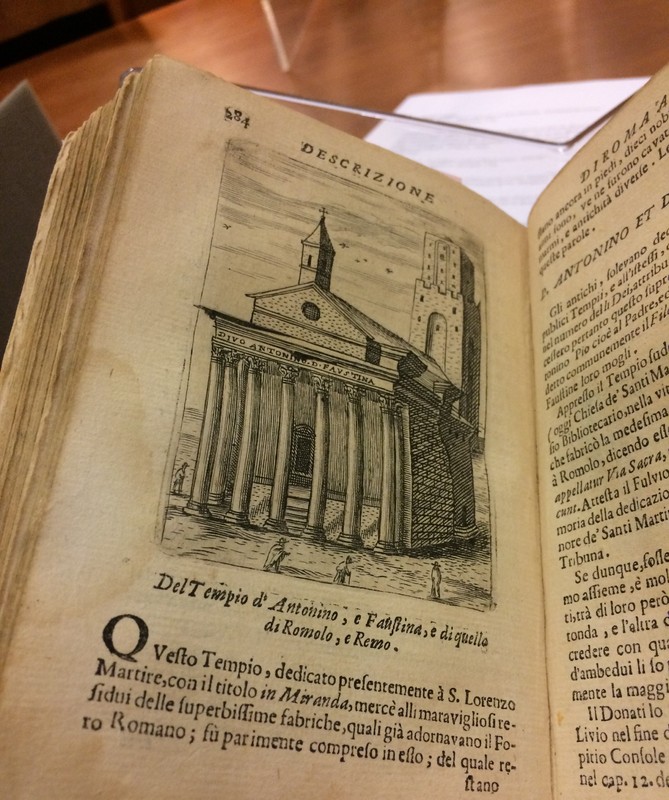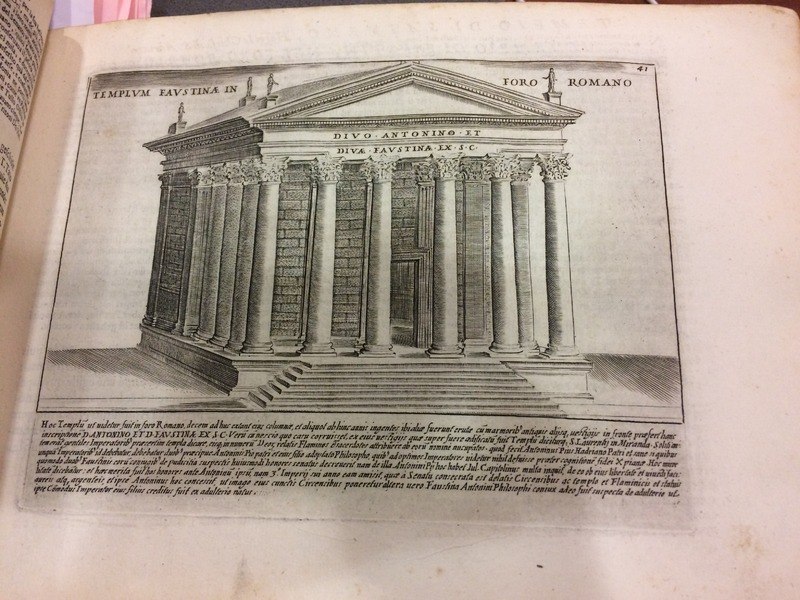The Monument in Seventeenth- and Eighteenth-Century Literature

Image of the Temple of Antoninus and Faustina, in Silvio Valenti's Roma Antica, E Moderna Osia Nuova Descrizione, 1750.

Image of the Temple of Antoininus and Faustina in Giacomo Lauro's Splendore dell'antica e moderna Roma, 1641.
The Temple of Antoninus and Faustina remained as a Roman monument of interest during the seventeenth and eighteenth centuries. It is discussed in texts like Giacomo Lauro's Splendore dell'antica e moderna Roma (1641), and Silvio Valenti's Roman Antica, E Moderna Osia Nuova Descrizione (1750), both of which include unrealistic printed images of the temple. Lauro's book depicts the monument without a baroque exterior, and without its frieze. Similarly, Valenti's text also illustrates the temple with features that are not historically accurate; the monument is pictured with stairs on the space between its columns and door, and without a frieze and baroque exterior. Though historically inaccurate, both Lauro and Valenti's books shed light on seventeenth- and eighteenth-century society's fascination with monuments like the Temple of Antoninus and Faustina.
__________________________________________________________________________________________________________________
1. Giacomo Lauro. Splendore dell'antica e moderna Roma (Roma: Nella Stamparia d'Andrea Fei, 1641).
2. Silvio Valenti. Roma Antica, E Moderna Osia Nuova Descrizione (Roma: Nella Stamparia Puccinelli, 1750).